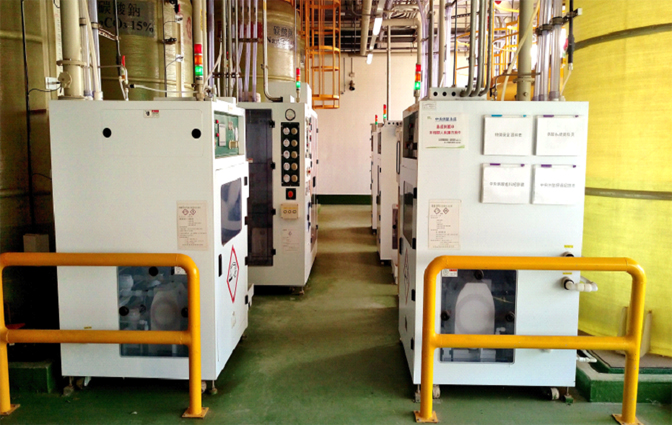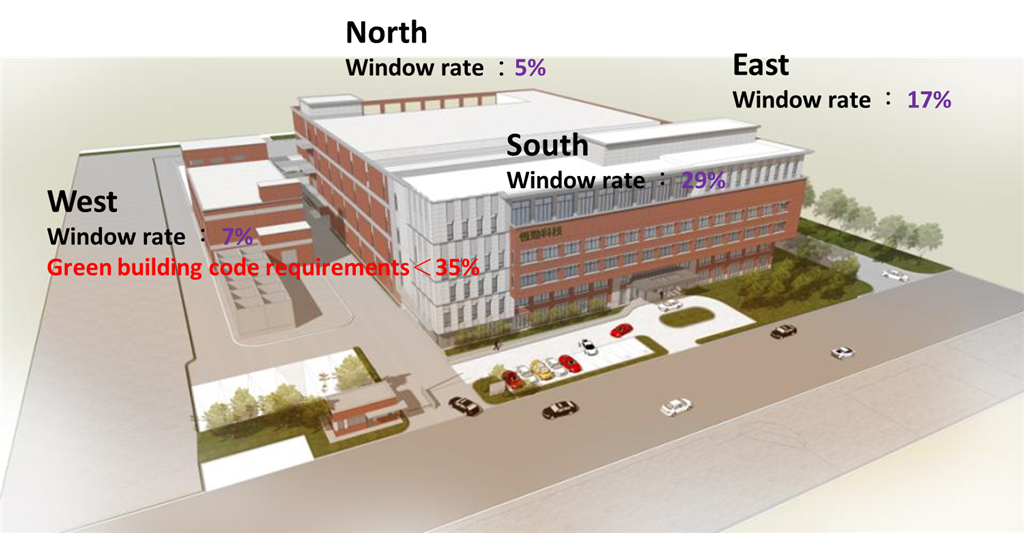Environmental Protection


Water Resources Management
 PPt separates drain pipe into more than 22 categories based on their characteristics and more than 2 categories of treatment systems. PPt’s facilities collect process water discharges through independent drainages, and reuse the water for the manufacturing process or secondary uses after treatment. These secondary uses, which do not come into human contact, include make-up water of cooling towers and wet scrubbers, cleaning water for sludge dewatering filters in wastewater treatment systems, and toilet water. PPt is a fast-growing company, and in addition to adopting a minimum process water recycling rate of 50%, we also select low water consumption process tools, implement process water drainage segregation, set up process water reclaimed systems in new factory construction, and continue promoting water saving measures after mass production. The purpose of these measures is to reduce our raw water demand.
PPt separates drain pipe into more than 22 categories based on their characteristics and more than 2 categories of treatment systems. PPt’s facilities collect process water discharges through independent drainages, and reuse the water for the manufacturing process or secondary uses after treatment. These secondary uses, which do not come into human contact, include make-up water of cooling towers and wet scrubbers, cleaning water for sludge dewatering filters in wastewater treatment systems, and toilet water. PPt is a fast-growing company, and in addition to adopting a minimum process water recycling rate of 50%, we also select low water consumption process tools, implement process water drainage segregation, set up process water reclaimed systems in new factory construction, and continue promoting water saving measures after mass production. The purpose of these measures is to reduce our raw water demand.
Energy Conservation and Carbon Reduction
 PPt has consistently promoted energy conservation. Let PPt to be a leading global company in energy conservation and carbon reduction. We took the following actions to respond to energy conservation.
PPt has consistently promoted energy conservation. Let PPt to be a leading global company in energy conservation and carbon reduction. We took the following actions to respond to energy conservation.
1.Heat Recovery of Chiller System
2.Heat Recovery of Boiler System
3.Heat Recovery by Drying section of machine
4.Optimization of Air Compressor System
5.FFU (Filter Fan Unit) using DC fan
6.Dormitory using Heat pump heating system
7.Optimization of Air-conditioned office
Green Manufacturing
 PPt’s pollution prevention is based on the ISO 14001 environmental management system, to promote continuous improvement. We believe that conserving raw materials, energy, and resources as well as reducing waste and pollutants both saves production costs and protects the environment.
PPt’s pollution prevention is based on the ISO 14001 environmental management system, to promote continuous improvement. We believe that conserving raw materials, energy, and resources as well as reducing waste and pollutants both saves production costs and protects the environment.
Source Reduction – Raw Materials Usage Reduction
PPt seeks to optimize processes to minimize raw material use and waste production. Internally, we optimize our process recipe for raw material usage, which can not only reduce production cost but also reduce the generation of pollutants and wastes. Externally, we require our process tool suppliers to review and minimize the chemical usage step by step.
Air Pollution Control
PPt’s air pollution control strategy is to optimize process to reduce pollutants, and then to abate pollutants in air exhaust through high-efficiency equipment to comply with or surpass legal requirements.
PPt emit three major types of exhaust: acid exhaust, base exhaust, and volatile organic compounds. Air pollution control systems depend on various categories and characteristics of pollutants. To ensure normal equipment operations and reduce abnormal pollutant emissions, PPt has installed backup systems, including power generation, to back up malfunctions of operation equipment.
Water Pollution Control
PPt’s water pollution control strategy is collected to wastewater treatment facilities through separated piping, and water recycling and treatment of pollutants in water. Effluent water quality must be better than or compliant with governmental standards.
PPt adopts a strict front-end wastewater categorization strategy to improve treatment efficiency. In order to manage these drains strictly, carefully operated and maintained by professional teams to comply with the standards of the Hsinchu Industrial Park. The Hsinchu Industrial Park also conducts random measurement of the effluent.
Waste Reduction and Resource Recycling
PPt has transitioned from traditional waste cleaning and disposal to integrated resource management, and has a designated waste resources management unit to treat waste as valuable resources to be recycled as much as possible. In order to sustainably use our resources, the first priority of our waste management is reduction; the second is material recycling, followed by energy recovery, and finally disposal through incineration and landfill.
Green Product Design improvement
 PPt puts emphasis on green design thinking from the preliminary stage of its product design.
PPt puts emphasis on green design thinking from the preliminary stage of its product design.
(1) Reduce the use of chemicals:the same industrial process, PPt designed to reduce the use of chemicals up to 60%.
(2) Increasing energy efficiency of products:energy use on the production line to replace thermal energy, in line with safety and environmental benefits.
(3) Reducing the use of environment-related substance:Import lead-free process and low halogen materials, and actively help customers develop greener the product
(4) Reduce material transport carbon emission:our low-carbon procurement principles, in addition to the key components, the possible priority to local suppliers. And advocacy as well as suppliers to set Local Hub of reusable transport carrier and freight delivery, optimizing route planning and other techniques, together to achieve the saving benefits of green logistics.
(5) Use of green packaging material:PPt products using green packaging materials (including cardboard, cartons, boxes, etc.) for transport, waste packaging material is recyclable or reusable.
Green Building
According to design ratio of transparency, make full use of natural light, Saving lighting.
